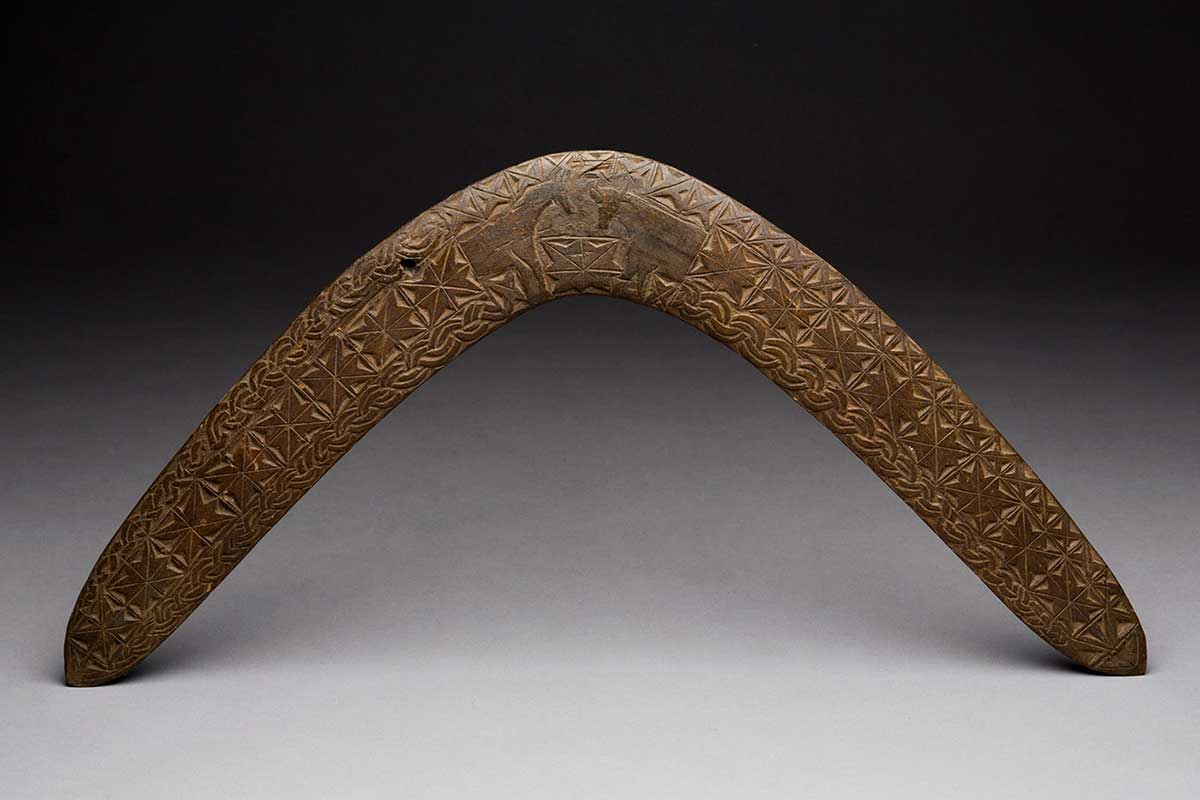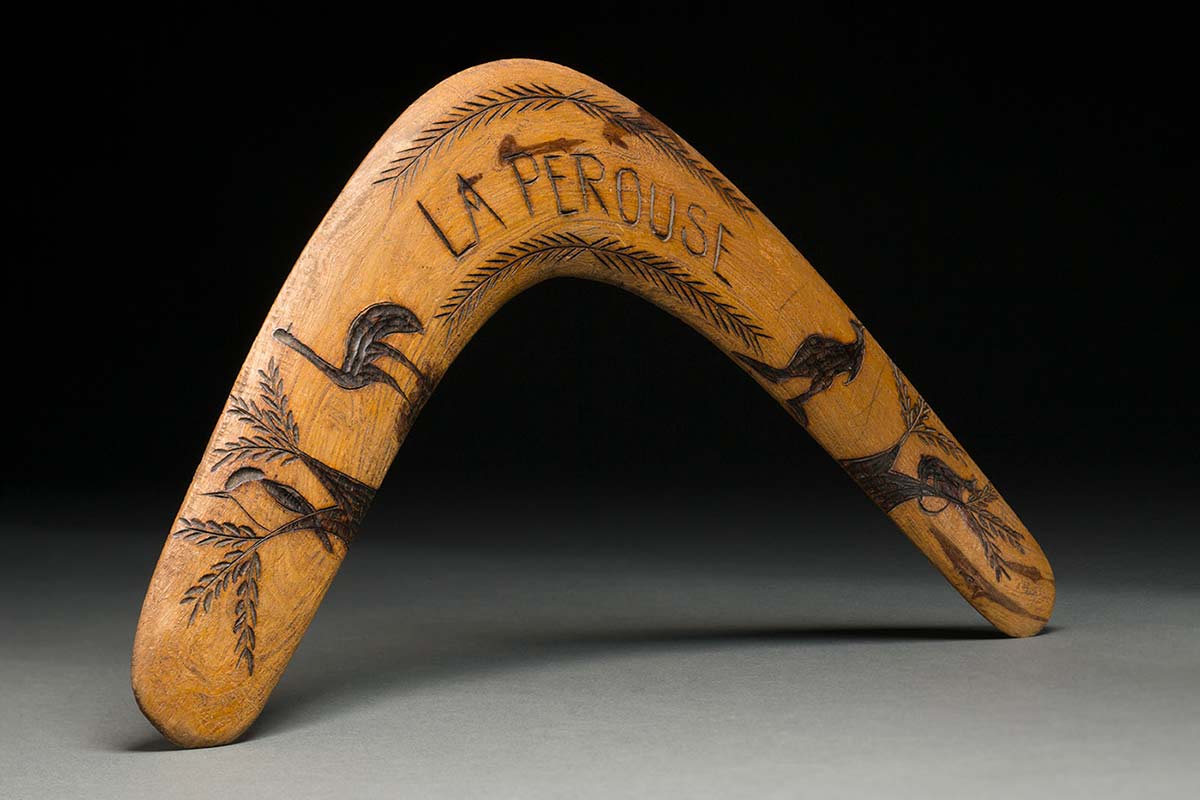
Boomerangs have a rich history that spans thousands of years, finding their origins primarily among the Aboriginal peoples of Australia, where they are regarded not only as tools but also as cultural symbols. For Aboriginal people, the boomerang is deeply embedded in their cultural narratives, representing both the perseverance of their heritage and a connection to their ancestral land. In creation mythology, boomerangs are said to have played a role in forming the Australian landscape, with stories telling how ancestors shaped the earth with these implements as they roamed the land[2].
Evidence of early boomerangs can be traced back to various archaeological finds. The most notable among these is a 23,000-year-old boomerang crafted from a mammoth tusk, discovered in Poland. This discovery highlights the fact that the use of boomerang-shaped tools was not exclusive to Australia; similar implements were utilized in different cultures worldwide throughout history[1][4].
Types of Boomerangs and Their Uses
There are primarily two types of boomerangs: returning and non-returning. Returning boomerangs are lightweight, with a specific curved shape designed to return to the thrower after being thrown. In contrast, non-returning boomerangs are typically longer and straighter, used primarily as hunting weapons or tools in various traditional contexts[5][6]. Aboriginal peoples utilised both types for different purposes—returning boomerangs for sport and for imitating raptors to drive birds into nets, while non-returning types were primarily weapons, effective in hunting larger game like kangaroos and emus[2][5].
The design of a boomerang is not merely aesthetic but functional. The main technological secret lies in the shape of the arms and how they interact with aerodynamic principles during flight. This is crucial for their effectiveness as hunting tools, showcasing the ingenuity of the Aboriginal peoples in creating implements suited to their environmental conditions[4].
Cultural Significance

In Aboriginal culture, boomerangs are not only functional tools but also works of art. They are often decorated with intricate designs reflecting the cultural stories and significance of the maker's lineage. This artistry is vital, as each boomerang carries a unique identity—making them not mass-produced items but personal expressions of pride and skill[5].
Boomerangs also hold spiritual significance. They are involved in various ceremonies and may be used in traditional dances, where they serve as percussion instruments when clapped together or struck against the ground[5]. This multifunctionality highlights the versatile role of boomerangs in cultural practices beyond mere physical utility.
Trade and Evolution
The exchange of boomerangs among Aboriginal groups has a long history, facilitating culture sharing and technological development across different communities. Specific types of boomerangs, such as the hooked 'number 7' boomerangs from north-central Australia, were widely traded. This exchange not only promotes social interactions but also allows for variations in design and technique, thus enriching the cultural fabric of Aboriginal societies[2].
The fascination with boomerangs extends beyond Aboriginal culture into contemporary society, where they are often viewed as symbols of Australia itself. Unfortunately, this popularity has led to a homogenization of their representation, eclipsing the diverse cultural practices related to boomerang usage among different Aboriginal nations[2][4].
Modern Interpretations and Usage

In the modern era, boomerangs are often made from high-grade materials like plywood and fiberglass, diverging significantly from their traditional wooden counterparts. While they continue to be used for recreation and sport, the traditional roles of hunting and ceremonial uses have diminished considerably[5][6]. Nonetheless, many Aboriginal communities still create boomerangs as a means of sustaining cultural practices and as a connection to their past, ensuring that this significant piece of heritage endures despite contemporary challenges.
Boomerangs have become internationally recognized emblems of Australian identity, featured in tourism and merchandise, which sometimes perpetuates a simplistic understanding of Aboriginal culture. Despite this, the journey of the boomerang—from its functional design and cultural significance to its embodiment in Aboriginal storytelling—demonstrates a rich narrative that transcends simple utility and encapsulates a deep respect for the land and traditions of Indigenous Australians[2][4][5].
In summary, the boomerang serves as a powerful symbol of ingenuity, cultural significance, and a testament to the enduring legacy of Aboriginal peoples in Australia. Its story interweaves art, function, and spirituality, marking it as a timeless element of human expression across cultures and eras.
Get more accurate answers with Super Pandi, upload files, personalized discovery feed, save searches and contribute to the PandiPedia.
Let's look at alternatives:
- Modify the query.
- Start a new thread.
- Remove sources (if manually added).